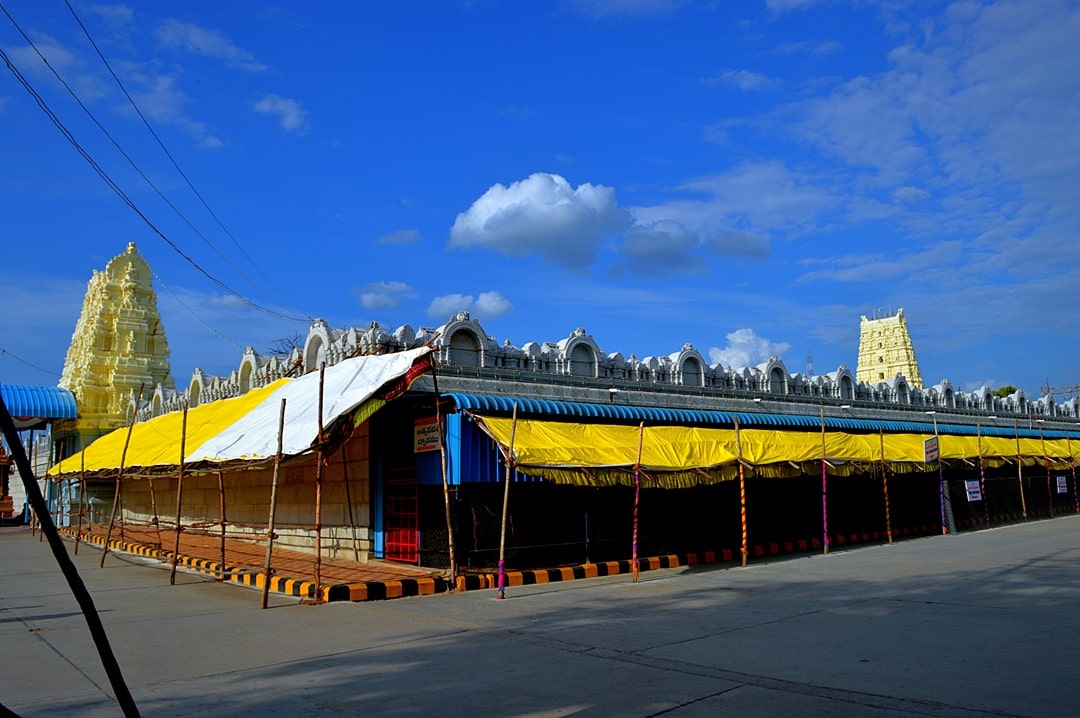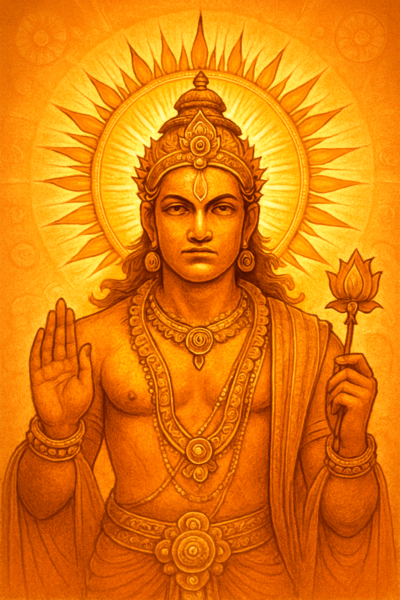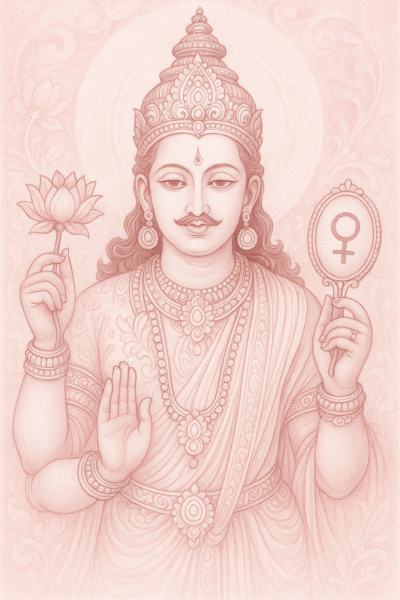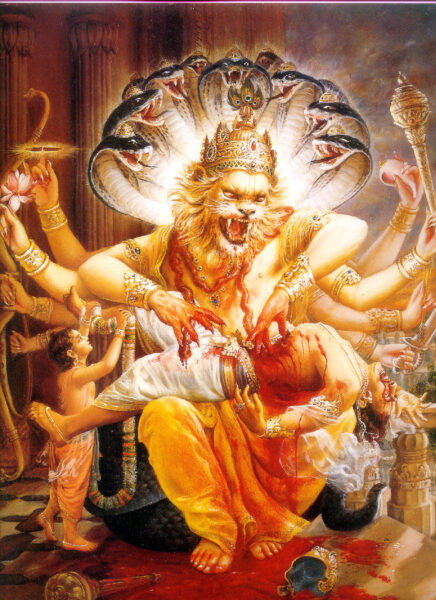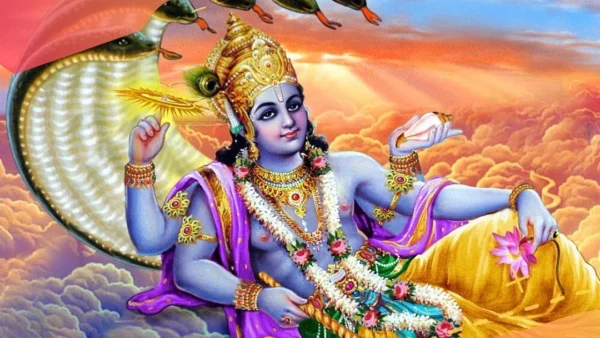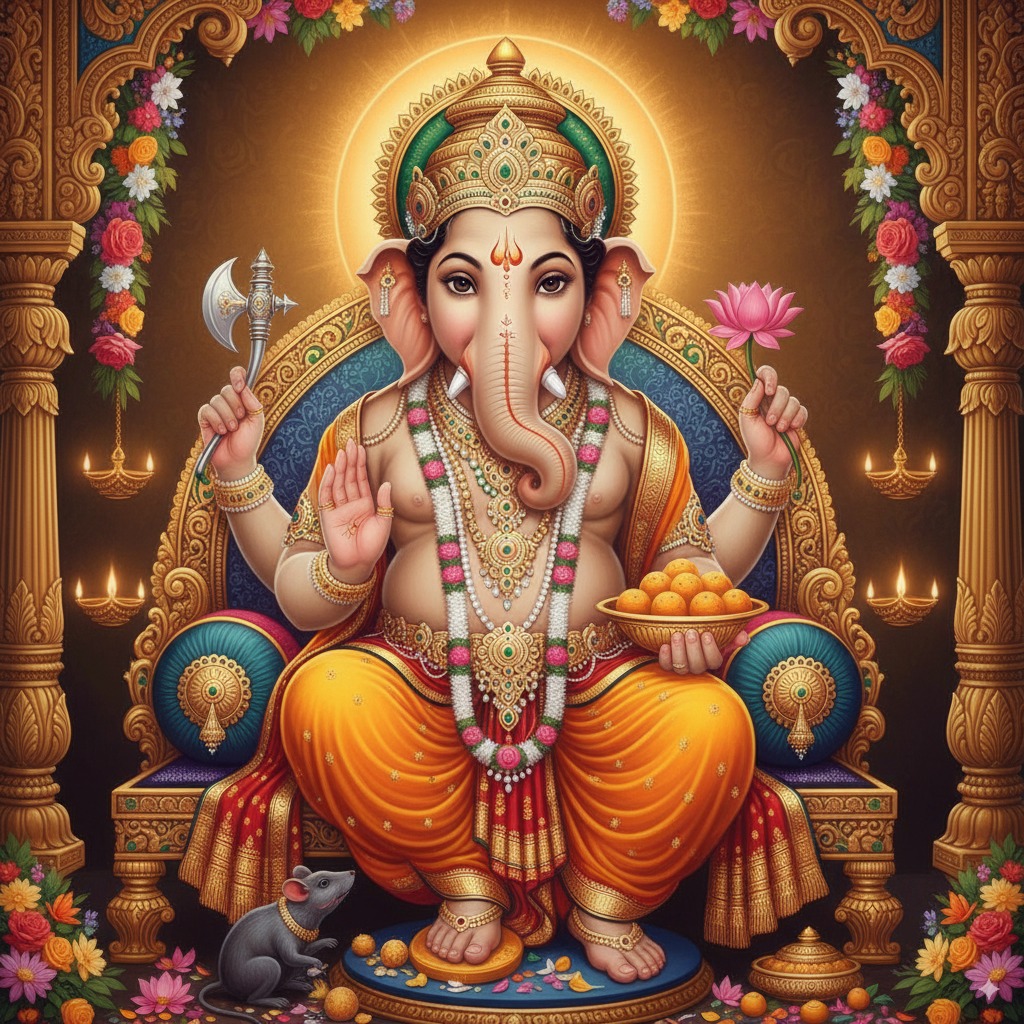Introduction
The Shree Varasiddhi Vinayaka Temple, also known as the Kanipakam Vinayaka Temple, is one of the most miraculous and spiritually significant temples dedicated to Lord Ganesha. Located in Kanipakam village near Chittoor in Andhra Pradesh, this ancient temple is renowned for its Swayambhu (self-manifested) idol of Lord Ganesha that is said to grow in size every year — a divine mystery that continues to inspire awe and devotion among devotees.
The temple’s name, “Varasiddhi Vinayaka,” means “The Lord who grants boons and success.” It stands as a living testament to faith, humility, and the boundless grace of Lord Ganesha, the remover of obstacles and harbinger of prosperity.
Legend and Historical Significance
According to ancient legend, the temple’s origin is linked to three brothers who were mute, deaf, and blind. They made their living by cultivating a small piece of land. One day, while trying to dig a well, their shovel struck a stone, which began to ooze divine blood. The shocked brothers soon regained their senses — their disabilities vanished instantly. The villagers recognized the spot as sacred, and later, a temple was built around the self-manifested idol of Lord Vinayaka.
This miraculous event is believed to have occurred around the 11th century CE during the reign of the Chola dynasty. Later, the Vijayanagara kings expanded and endowed the temple, adding artistic features and ornaments that enhanced its spiritual grandeur.
Architectural Features
The Kanipakam Temple is built in the traditional Dravidian style of architecture, characterized by its intricately carved Gopuram (entrance tower), massive stone walls, and pillared corridors. The sanctum sanctorum houses the Swayambhu idol of Lord Varasiddhi Vinayaka, which is unique in several aspects — the idol is situated in a well filled with sacred water, and devotees can see the water level rising and falling naturally with time.
Over the centuries, devotees and temple authorities have observed that the idol’s size increases gradually — a divine phenomenon that defies scientific explanation and reaffirms the living presence of the deity.
Rituals and Daily Worship
The daily worship at Kanipakam follows age-old Agama traditions with utmost devotion and precision. Devotees perform Abhishekam using holy water, milk, honey, and coconut water — symbolic of purity and surrender.
- Suprabhatam: Early morning prayers to awaken the Lord.
- Abhishekam: Ritual bath performed multiple times daily.
- Alankaram: Decoration of the idol with flowers and ornaments.
- Maha Aarti: Performed in the evening amid chanting of Vedic hymns.
Devotees also offer coconuts as a symbolic gesture of breaking ego and seeking new beginnings. The temple allows pilgrims to participate in special sevas like Pallaki Seva, Kalyanotsavam, and Sahasra Modaka Seva (offering 1000 modaks to the Lord).
Festivals and Celebrations
The grandest celebration at the temple is the Vinayaka Chavithi Brahmotsavam, held every year in August–September. The festivities last for 21 days, featuring colorful processions, devotional music, Vedic rituals, and cultural performances that attract devotees from across India.
Other important celebrations include Sankashti Chaturthi, Magha Shuddha Chaturthi, and Ganesha Jayanti. During these occasions, the temple is beautifully decorated with lights and flowers, and thousands gather to seek the blessings of Varasiddhi Vinayaka Swamy.
Temple Timings
- Opening Time: 4:00 AM (Suprabhatam)
- Darshan Timings: 5:00 AM – 9:30 PM
- Abhishekam Timings: 4:30 AM – 5:30 AM and 6:00 AM – 12:00 PM
Special darshan and seva slots are available through the official Kanipakam Temple Devasthanam portal for pilgrims visiting during festivals or weekends.
How to Reach Kanipakam Temple
- By Air: The nearest airport is Tirupati International Airport, about 70 km away.
- By Train: The closest railway station is Chittoor Railway Station (approx. 12 km from the temple).
- By Road: The temple is well connected by buses and taxis from Chittoor, Tirupati, and Vellore.
Accommodation and Facilities
The Devasthanam Board offers accommodation facilities ranging from dormitories to comfortable rooms for pilgrims. Private hotels and lodges are also available nearby. The temple management provides free meals (Annadanam), drinking water, and resting areas for devotees visiting throughout the day.
Spiritual Significance
The Kanipakam Vinayaka Temple is not merely a place of worship — it is a manifestation of living divinity. The growing idol is seen as a symbol of Lord Ganesha’s infinite energy and presence, ever-expanding to bless all who come in devotion. It is said that any vow or promise made before Varasiddhi Vinayaka must be fulfilled with utmost sincerity, for the Lord here listens closely to every devotee’s plea.
Chanting the mantra brings peace, clarity, and strength:
“ॐ वरसिद्धिविनायकाय नमः” – Om Varasiddhi Vināyakāya Namah
Worshipping at Kanipakam is believed to remove karmic burdens and ensure the fulfillment of righteous desires.
Visitor Information
- Location: Kanipakam Village, Chittoor District, Andhra Pradesh, India
- Deity: Lord Varasiddhi Vinayaka (Self-manifested Ganesha)
- Entry Fee: Free / Special Darshan tickets available
- Best Time to Visit: September to February (cool weather and festival season)
Conclusion
The Shree Varasiddhi Vinayaka Temple at Kanipakam is a sacred space where faith meets miracles. Every drop of water in the sacred well, every chant of “Ganapati Bappa Morya,” and every offering of a coconut reflects humanity’s trust in divine justice and mercy. The temple remains a glowing example of how devotion transcends logic — reaffirming that where there is true surrender, there is divine presence.
May Lord Varasiddhi Vinayaka bless every devotee with success, peace, and prosperity. 🙏

